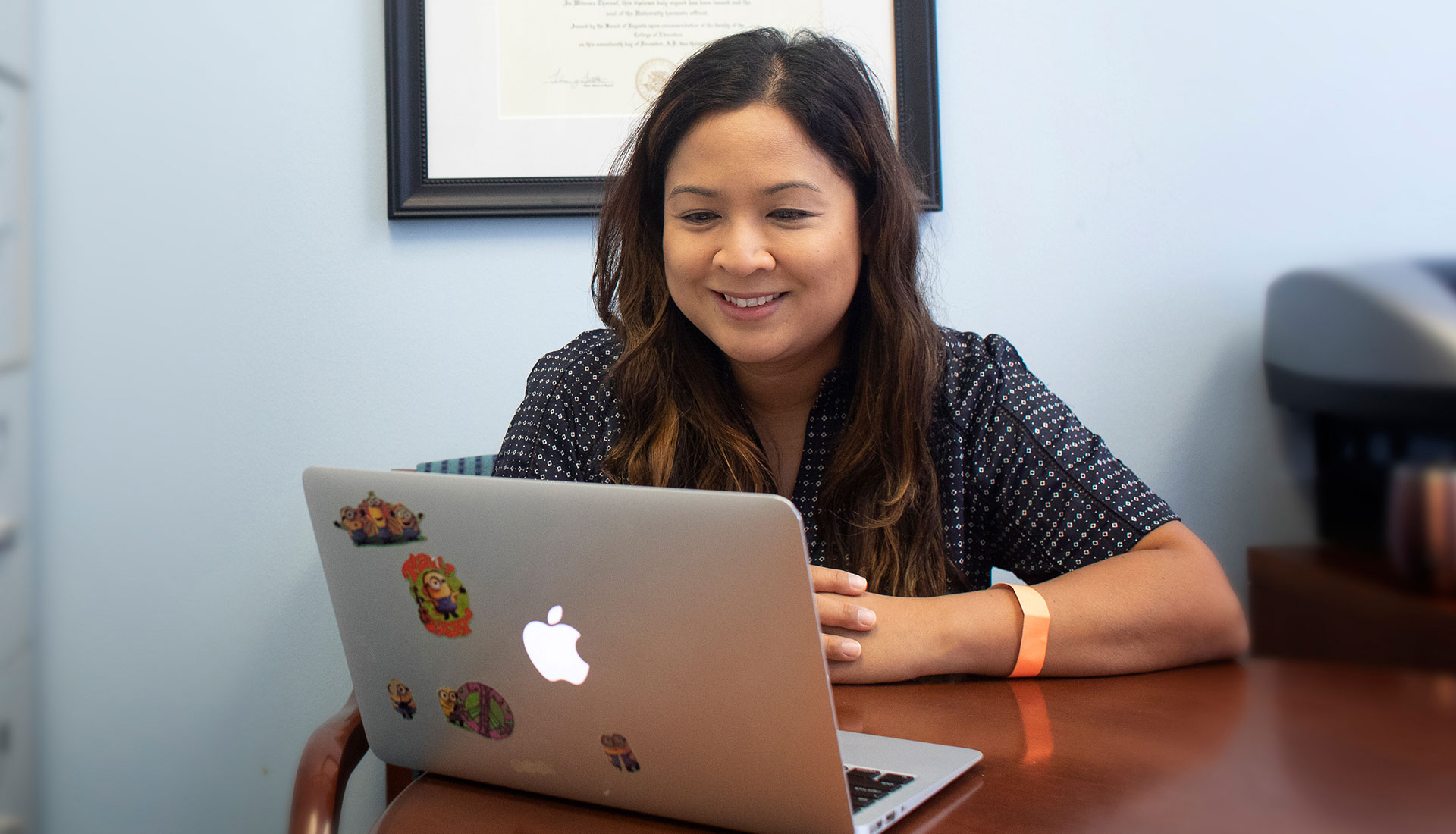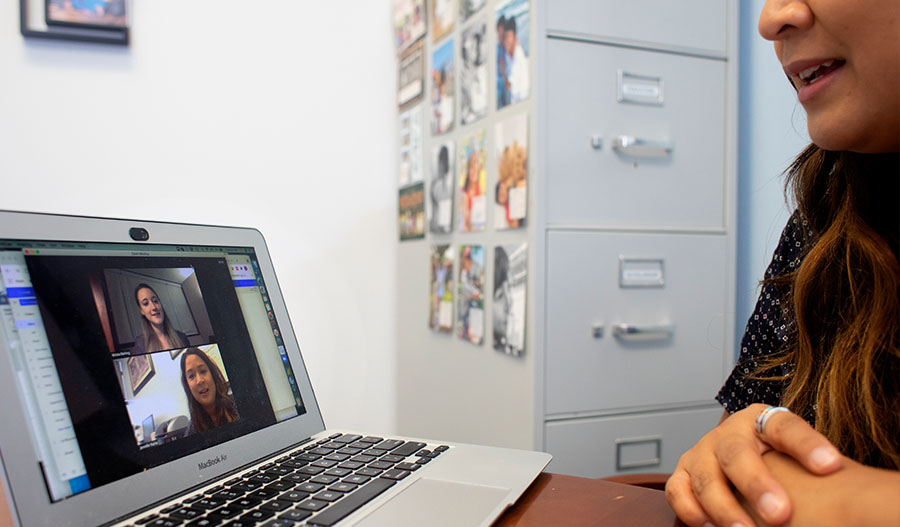

Jetting around the country may sound glamorous. But if you’re a graduating medical student or resident – and not rich or famous – traveling to interviews for a residency or fellowship can be challenging. Changes prompted by COVID-19 travel restrictions may improve the process.
“When I was a resident, I took out school loans to do my interviews,” said Elaine K. Fielder, MD, Pediatric Residency Program director at Baylor College of Medicine and Texas Children’s Hospital and associate professor of pediatrics-emergency medicine at Baylor. “The cost for the applicants is just astonishing, and the resources and time that it takes for the applicants to travel all across the U.S. for interviews.”
Because of COVID-19, residency and fellowship programs throughout the nation agreed that in 2020 all interviews would be conducted virtually. Instead of meeting applicants in a medical school conference room, the Baylor-Texas Children’s recruitment teams interviewed them on Zoom. A video tour, created by the Department of Pediatrics leadership and Texas Children’s Marketing, showed the general resources and environment.
“The hardest thing is not having the ability to have that one-on-one time in person and showing them our amazing hospital and the fantastic facilities. One of the things we try to convey over our Zoom interview process is that feeling of how amazing the Texas Medical Center is, as well as the largest children’s hospital and the largest pediatric program in the nation. We’ve worked the whole season at how to convey that this is a big program with a small program feel,” Dr. Fielder said.
Graduate medical education staff had to introduce their programs and evaluate applicants without meeting them in person.
“Program directors needed to develop new processes to recruit virtually,” said Jennifer A. Rama, MD, MEd, Pediatric Pulmonology Fellowship Program director and associate professor of Pediatric Pulmonology.
“That’s where collaboration and creativity came into play. The program directors shared ideas and innovations. It took a lot of work and teamwork to create everything from scratch. What would work for one fellowship program might not work for another, but the unity and cross collaboration among program directors and coordinators enabled all of us to accomplish our recruitment goals,” said Dr. Rama, who also is co-director of Texas Children’s Fellows’ College. Fellows’ College is a centralized program that offers a core curriculum and yearly events to pediatric fellows across subspecialties for personal and professional growth and community-building.
Instead of just transferring an in-person interview day into Zoom, directors tailored recruitment to capture applicants’ interest in the programs and to show how fellows interact with faculty and peers. For example, to avoid Zoom fatigue and provide realistic snapshots of the program, the Pulmonology Fellowship Program abbreviated the formal interview day and offered several options for multiple touchpoints on other days:
For the residency program, the leadership team narrowed down about 1,500 applicants to conduct 350 Zoom interviews.
“It was definitely a learning process. We did five or six mock interview days, navigating the new system and troubleshooting dropped calls and lost applicants. We went through a variety of possible scenarios and snafus and worked through each of them,” Dr. Fielder said.
Both the residency and the fellowship programs collected feedback from applicants and tweaked their interview processes in response.
Krista Reiling, MD, and her husband, John Shabosky, MD, both went through the fellowship recruitment process, applying to 15 programs and interviewing at nine of them. In December 2020, they learned that Dr. Reiling matched to the Baylor-Texas Children’s Pediatric Pulmonology Fellowship, and Dr. Shabosky to the Pediatrics Cardiology Fellowship.
“Here was different from other places in that we had the opportunity to attend lectures and fellow case presentations outside of the interview day,” Dr. Reiling said. “I thought it was helpful to have sort of a reminder later in the interview season of what Baylor was like, which other programs didn’t necessarily do.
“As far as the interview structure, meeting with different fellows in smaller groups than at some other places was also helpful. We were able to have more personal conversation and feel like all of our questions were answered,” she said.
 Pediatric Pulmonology Fellowship Program director Jennifer A. Rama, MD, MEd (lower half of monitor’s screen) interviews applicant Krista Reiling, MD.
Pediatric Pulmonology Fellowship Program director Jennifer A. Rama, MD, MEd (lower half of monitor’s screen) interviews applicant Krista Reiling, MD.
Although the virtual process reduced opportunities to see interactions between fellows and faculty, it offered other advantages over the traditional interview process.
“Through the process this year, I was able to interview in between clinic sessions and do interviews on the same day that I was fulfilling my other obligations. I was able to spend the time focusing on the actual program, their curriculum, my interactions with the staff and faculty, rather than worrying about missing a flight, checking out of my hotel room, making sure that I packed up my suitcase and didn’t leave anything behind,” Dr. Reiling said.
The process worked well for applicants and for the Baylor-Texas Children’s residency and fellowship programs. All the pediatric fellowship programs filled all their positions, a remarkable achievement given the pandemic circumstances on top of pre-existing national trends in pediatric subspecialties, according to Dr. Rama.
The difficulties of a pandemic year brought program directors together; they will continue to evaluate their recruitment strategies and may make long-term changes based on the year’s experience.